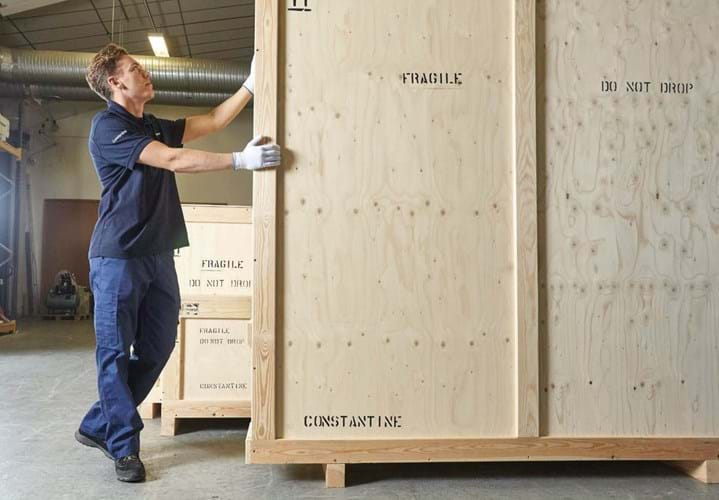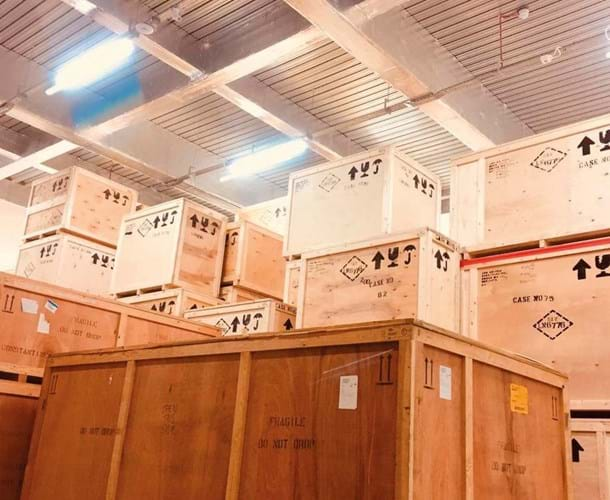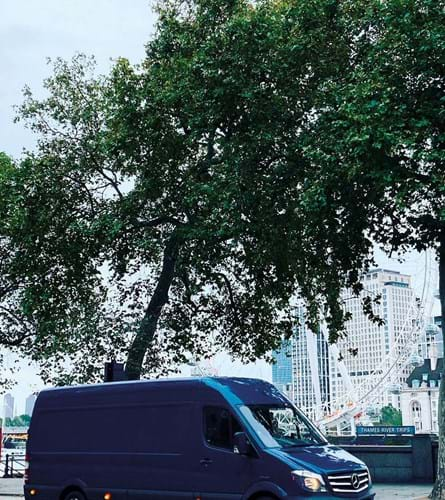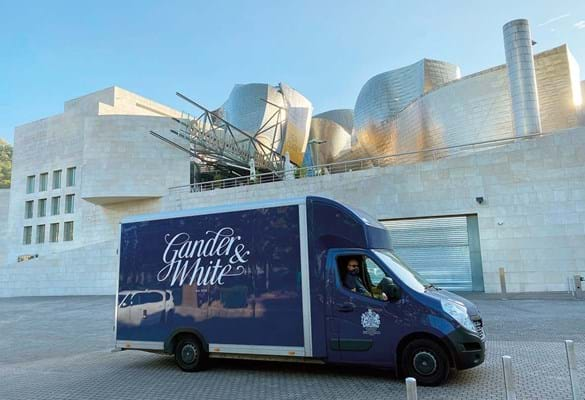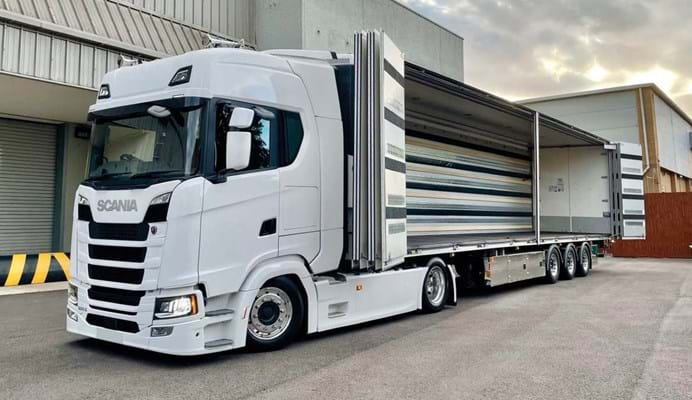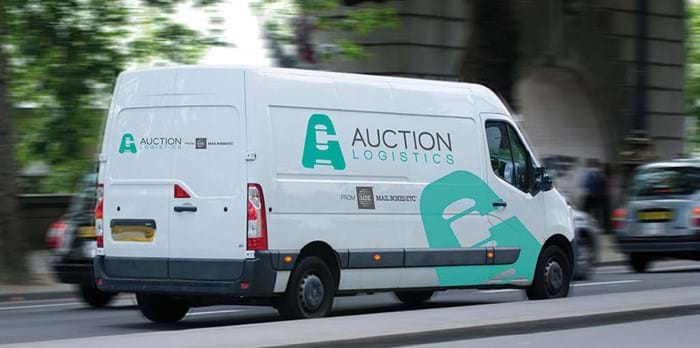The shipping sector has continued to deliver art, antiques and collectables to buyers across the land even through the pandemic. Here key players share their experience of this unprecedented year and their predictions for 2021.
Acton in west London, birthplace of The Who and home of Arthur Daley’s car lot in Minder, is actually a frontier – a new border with Europe.
Inside logistics firm Hedley’s warehouses near Park Royal, trucks loaded with art and antiques are processed to travel into Europe just as if they were in Dover about to embark.
The same procedures are happening in many logistics warehouses around the country, including at Gander & White’s Wimbledon warehouses.
The preparations are all in place for Brexit and when the transition period ends on December 31: from January onwards cargo moving between the UK and the EU will have to undergo customs formalities and border control.
Hedley’s Group general manager Victor Jaques says: “The border becomes our warehouse. From next year it is very strict about when the vehicles can come in and out and it is all in place ready for Brexit. In future the processes for Europe may be as they are for Switzerland currently.
“We can clear customs in our warehouses before leaving for the ports. We are prepared as we can be. The warehouses have been ready from the beginning of this year but lockdown has eaten into the time that was the so-called transition period.”
The Kent Access Permit (KAP), a document that logistics drivers must have before heading to the ports in Kent, means all the online forms are completed beforehand.
Victor Khureya, executive operations director at Gander & White, says the preparations are ongoing for the worst-case scenario of no-deal and “if it is anything better than no-deal then that is a bonus”.
He says customs agents have been trained and more have been hired as well as the KAP being in place. As with Hedley’s, Khureya adds: “Before you depart all the forms are completed beforehand so the truck is ready to go rather than things being checked in Dover causing hold-ups.”
There is one thing on Khureya’s Christmas wish list, however: digital export licences.
He adds: “We would love to see export licences electronically stamped and that they remain as digital applications. There is a lot of lobbying around this issue and it is vital that we can continue to access these licences online.”
Art, antiques and collectables more than 50 years old deemed cultural goods must be accompanied by an export licence from the Arts Council if they are to be exported. The Export Licensing Unit (ELU), which closed under the March lockdown, reopened in the summer with a new temporary procedure that can be completed online.
The British Art Market Federation (BAMF) and its association members have been lobbying Arts Council England and the government for this to become fully digitised permanently.
James Simmons, marketing manager at Mail Boxes Etc, says: “The full impact of Brexit will not be known until after the transition period ends. There will undoubtedly be more paperwork to prepare and process and changes in how VAT is applied for remote bidders requiring shipping outside of the UK and carriers may change their prices.
“We also predict a shift from scheduled road freight to airline shipping, especially in the early days while ports become congested, with officials checking paperwork is correct and complete.”
Air freight cost
But many firms have noted the rising costs.
Gander & White’s Khureya says: “Air freight capacity is still very limited and very expensive. Some clients are waiting for rates to reduce. If freight rates were cheaper we would have much more movement in the market.”
Drivers have been encouraged to look at other options other than the usual Kent to France routes.
David Forster, who runs delivery firm Art Move UK from his home in Hexham, Northumberland, said: “We have been told to consider avoiding Dover and seek alternative routes to Europe such as via Hull or Newcastle to Amsterdam via ferry.
“However, even from where we are based in Northumberland, this option is treble the cost. Dover to France is around £200 compared with over £1000 to Amsterdam on the ferry.
“This makes things difficult for customers as we have to pass on the cost. It is still cheaper to drive all the way down to Kent from the north of England, go to France and drive back up into the Netherlands than take the ferry option.”
This could mean longer journey times due to delays or more expensive trips for consignors of goods. Danish logistics firm DFDS is promoting a new direct Ireland to France freight ferry route between Rosslare and Dunkerque that offers “lorries and their drivers direct and paperless transport between EU countries”.
No-one really can anticipate what will happen next year but some believe France will become a bigger hub for art and antiques logistics over London.

Hedley’s Group truck
Hedley’s Jaques says: “Currently items go through London and then into Europe, but items for Europe from elsewhere in the world will probably go through France first and only items direct for the UK will come to London. This could be a major shift in our operations and we may well recruit there.”
Hedley’s currently has four operations in France: two in Paris in St Ouen and Saint Denis, one in Avignon and one in Nice in the south.
Brexit has been on the horizon for years, but no business could have anticipated the impact of the coronavirus before it struck.
Although logistics firms were classed as essential business during the lockdowns and could continue to operate – in many cases finally getting the recognition for their work – the decrease in demand during the first lockdown damaged the trade.
Many firms have had to furlough staff or make employees redundant.
Even with trade returning, most international art fairs are postponed and museums closed for many months, so the market is still tough.
Gander & White, which operates from more than 350,000 sq ft of fine art warehousing in locations across the UK, Europe and the US, has many clients in the top-end gallery and museum sectors.
Khureya says: “At the high end it is very slow. Art fairs have been cancelled, museums have had to close and at auction the very top end, at the multi-million-pound lot level, there have not been the sales. Online auctions are busy but the value of items has been reduced which means our operations have been impacted.”
Market growth
However, at the lower and medium level at auction, the art market appears to have been in growth.
Greg Bradley at Bradleys Furniture Carriers and Bradleys Antique Packing Services reports a surge in demand since the first lockdown earlier this year. Based in north-east England, he has taken on four more people and two new vans.
He says: “Business is really booming. It started off busy during the first lockdown from May and since then we have got even busier. People are stuck sitting at home and just want to keep bidding at auction and buying more items for their homes.
“We are growing our packing service and now work with auction houses including Elstob & Elstob, Sworders and Tennants.”
Bradley believes there has been some growth in business in Europe due to “people wanting to get things moved before Brexit”.
He adds: “The UK is cheaper at the moment for overseas as the pound is lower so they are getting a better deal. That has tempted buyers at auction here in the UK.”
Forster, who runs a team of four people with three vans, concurs, adding: “We’ve had the best year we have ever had with new enquiries every day. We are seeing a lot more demand from private individuals who have bought directly at auction rather than through centres or dealers.
“We have also seen a boost due to early present buying ahead of Christmas.”
Delivery firms are expecting the higher levels of activity driven by online sales to continue into 2021 and beyond.
Mail Boxes Etc runs 150 centres alongside franchisees operating its Auction Logistics service. Duncan Hypher, business development manager, says: “Our Auction Logistics business has seen a significant increase in the volume of lots collected, packed and delivered since lockdown measures eased.
“While the number of lots handled plummeted by 90% vs April 2019, with auction houses closed, volumes began to recover in May. Sales levels since the beginning of June have consistently grown compared to the same month in 2019.
“The growth since June has more than compensated for the drop in lots handled during the first lockdown with overall Auction Logistics business up 12%, cumulative 2020 vs 2019, to the end of October.”
James Simmons, marketing manager of Mail Boxes Etc, adds: “The move towards online sales has been growing steadily for years. We believe that art and antiques businesses are now significantly more prepared for online sales, increasing capacity for online bidding and handling of phone bidders within the saleroom.
“The outcome of lockdown may have been a welcome push for those on the cusp of making the change. We are already seeing new people entering the art and antiques market, and online sales is the way forward for a quicker, easier and safer customer journey.”
From shops to storage
The pandemic may cause another trend to develop: galleries using storage facilities instead of shops.
Hedley’s Group business development manager Will Blake says: “Some smaller central London galleries have found that as their business is now more online that it makes sense to close their central London premises and instead use a storage facility as their showroom.
“Being in Acton, close to central London, our facilities have easy access with everything needed. The buildings are secure, we have insurance, there are viewing rooms and climate-controlled spaces and items can be packed and shipped directly from there.”
Hedley’s Jaques agrees: “We could see a shift to this within five years for many galleries.”
Logistics firm Constantine is opening a new art storage facility next spring. The firm, which operates international transportation, packing, case-making, art storage and installation services, will open the 172,000 sq ft facility near Heathrow.
It has chosen the location to give its clients easy access from the airport but also via Crossrail to and from central London with Bond Street just 30 minutes away.
The new building will include more than a hundred private vaulted rooms ranging from 43 sq ft to 430 sq ft with the options for larger self-managed or shared managed storage areas.
Adapt and thrive
These initiatives are typical of the logistics and shipping sector taking anything in its stride, adapting and thriving.
From 4m-high furniture to multi-million-pound paintings and from rare Roman statues to taxidermy, there will always be a delivery firm that can wrap it and ship it.
The resilience and adaptability will be much needed in 2021 with Brexit, the ongoing pandemic and the continued demand for art, antiques and collectables to be delivered to the door.


